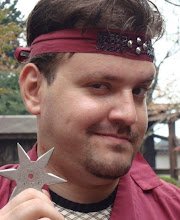So, I am here in Seoul, Korea... finally... In 3 short weeks, I have managed to revert to my earlier habits in Dubai... work, home, work, home, work, home, work, work, work.... home... weekend, sleep on weekend, sleep more on weekend... work, home... etc
So, what should I do? I have promised myself, even before I come to Korea, to mingle with other people, Korean and Non-Korea, outside the workplace....
It was about time I keep a promise to myself... just for a change!
But how can I do that? So, I searched the net a little bit and using Google and other Korea guides... and somehow I stumbled upon this website:
http://www.raskb.com/
It turns out that is an expedite group which makes trips on Saturdays and lectures on the weekday about Korean culture. So, being interested in getting to know more about this country said "Why not?" We gathered at 10:00am on Saturday, in front of a subway station.
We took the bus. Doseon Sa (pronounced "Do-Seon-Sa") is a very well known figure in Korean history. He was the reformer of Buddhism in Korea.. probably the greatest Buddhist monk who ever lived!
Why? Do you really wanna know why? then prepare yourself for a history lesson! I know, I know, most of us used to hate history maybe even more than geography classes...!
But I am going to talk about his life only... courtesy of Prof. David A. Mason, the university professor who guided us during the tour... one thing about this guy, he really loves history and the Korean culture Usually, when you see someone passionate about something, chances are a lot of this passion would rub on you...
which what happened to me in this case! I will be brief, for a detailed biography about Doseon's life, visit Prof. David's webpage:
Doseon-guksa: A brief Biography
 |
Chinese Characters at the age of 2? WAW! |
So, at 835 AD, soon after her was born, Doseon was a prodigy child said to have learned reading Chinese characters when he was two, and decided to shave his head and become a monk when he was 15. He entered a branch of Buddhism which was dedicated to learning scriptures.
The average monk typically 20~30 years to become enlightened in this discipline of Buddhism….. in order to become fully enlightened.
… It took Doseon only 3 years to memorize all the scriptures and become fully enlightened!
After this, he decided to pursue another branch or Buddhism, which was more focused on meditation, after a few more years he was enlightened in that discipline as well!
(think of it as obtaining two PhDs, back to back, in less than 6 years!)
So, our story hero, Doseon, was a fully enlightened monk at the age of 20
Was that enough for him? No! He decided to travel to China, the birth land of Buddhism, to purse more branches of Buddhism and learn more.
He learned about the energy of the Earth’s the different powers of energy
 |
Doseon-guksa: Tao-Abundance National-Master (826-898) |
which is concentrated in specific locations and then transmitted through the mountains to different lands. (“Final Fantasy-The movie'”.. anyone?)
It was a serious study which combined geography and astronomy and religion.
Upon returning to Korea, using his vast knowledge, he started having disciples who carried his teachings.
Studying Chinese history and mathematics, he knew that the current (then) Korean dynasty are coming to an end. Having predicted who will be next King or so, he devised a map (using his knowledge of the power of earth) to decide where the next Korea capital should be. With blueprints on were each Buddhist temple should be and in which exact location (in order to channel the power of earth to protect the capital)
He did all of this and put it in a sealed envelope and delivered it himself to the father of the next king’s father. To and unmarried man who was building a house. He told him that his house will witness the birth of a great person. And he gave the papers to him and ask him that they should not be opened until his child is mature enough.
Doseon died shortly after that.
Well, the story goes that. thirty years later, his child grow up to become the king of Korea and opened and followed Doseon’s plans for a new capital.
This temple was built to honor Doseon himself.
(To be continued...)
this button in the top right of the statue photo to see the photo in full size. Then you can either use the mouse to drag it around or save-as on your PC.
 The traditional Buddhist drum overlooking the above statue
The traditional Buddhist drum overlooking the above statue









